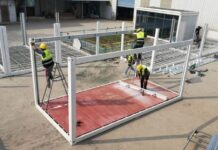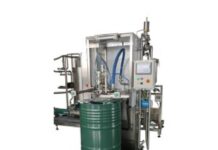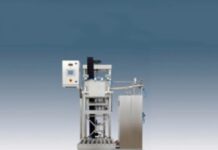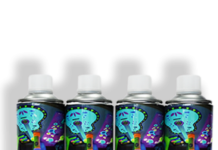(Isstories Editorial):- Jiangmen, Guangdong Nov 8, 2025 (Issuewire.com) – Selecting the right locking system is an important decision for facilities where both safety and reliability are essential. Banks, universities, government buildings, and data centers must balance ease of access with strict security and compliance requirements. Among the available hardware options, mortise locks are often chosen because they embed the lock body inside the door and combine multiple mechanical protections in one unit. Compared with cylindrical locks, which are more common in light-duty applications, mortise locks offer stronger durability, higher resistance to tampering, and the flexibility to support varied access control needs. Within this context, a China Top Mortise Lock Manufacturer provides hardware that aligns with these high expectations through careful design, testing, and compatibility.
Q1: Why are mortise locks often preferred over cylindrical locks?
That’s a fundamental question. In many lighter or residential settings, cylindrical (bored) locks may suffice. But when the stakes are higher, the structural and mechanical advantages of mortise locks make a clear difference.
More on Isstories:
- CSCEC’s Homagic Achieves Breakthrough in Zero-Carbon Modular Construction with China’s First MiC Project
- What Makes D-D Hardware a China’s Top Mortise Lock Manufacturer for High-Security Applications
- Meet SBFT at PROPAK: Showcasing the Latest Fully Automatic Bag in Box Wine Filling Innovation
- Writer Antonia Loukousia Reflects on America’s Loneliness Epidemic: “We Have Forgotten How to Belong”
- CEIC 2025: A deep integration of technology, scenario and ecology
First, the installation method: cylindrical locks are mounted by drilling two holes through the door face and edge, with mechanical components relatively exposed. Mortise locks, by contrast, require a pocket (a “mortise”) cut into the door edge so that the lock body sits within the frame of the door itself. This embedding protects critical components and reduces vulnerability to prying or forced torque.
Second, the internal mechanism is more complex in mortise locks. Instead of a single latch or bolt, many mortise designs integrate multiple components: a latch, deadbolt, and auxiliary deadlatch or deadlocking mechanism, all actuated via cams, followers, and linkages. Because of this layering, even if one piece fails or is attacked, other elements maintain integrity.
Third, durability under high use favors mortise locks. In places like lecture hall doors, server-room access doors, or control center entryways, locks may see thousands of cycles daily. Mortise locks tolerate that stress better than simpler cylindrical systems, especially when constructed with heavier, more rigid internal parts.
Taken together, for security-critical doors, the decision often is not “can I use a cylindrical lock?” but “can I accept the vulnerabilities of one?” D&D’s mortise systems are designed to meet the more rigorous expectation.
Q2: What design features give D&D mortise locks their strength?
Embedded construction and material choice
D&D manufactures mortise locks with stainless steel components such as SUS304 latchbolts, strike plates, and followers. Stainless steel provides resistance to corrosion, deformation, and long-term wear. This ensures stable performance even under demanding use. The SS304 ANSI Classroom Mortise Lock (DDAL05) illustrates this approach with durable material choices for institutional settings.
Complex mechanical architecture
Inside each mortise body, multiple moving parts work in sequence:
*Latchbolt ensures the door stays closed under light force.
*Deadbolt provides full locking engagement into the frame.
*Auxiliary deadlatch prevents manipulation of the latch when the door is shut.
*Cam and follower systems coordinate lever or cylinder actions.
This complexity is intentional; it ensures that no single point of attack compromises the lock.
Endurance and fire performance
In commercial use, locks may be operated thousands of times per month. D&D’s CE mortise series (such as DDML009) has been tested for 200,000 operational cycles. In addition, the same series achieves EN fire ratings up to 260 minutes, allowing them to serve on doors where both security and fire protection are regulated. For projects like financial offices or data centers, this dual compliance helps align with safety codes while maintaining security.
Q3: How does D&D provide functional variety with ANSI DDAL-functions?
Not every door in a project requires the same behavior. Some must always remain locked, while others must allow free passage or controlled privacy. To support these varied needs, D&D mortise locks are built around ANSI / UL 10C Fire Rated 3 Hours (UL File NO.R40901) DDAL-functions. Common examples include:
- DDAL20 (Apartemnt / High Security)– The latch bolt is bidirectionally operable via lever handles on both sides, except when the exterior lever is mechanically disabled by a stop or non-key locking mechanism. The deadbolt can be extended using an exterior key or interior thumbturn, with the exterior key configured to simultaneously retract both bolts upon rotation. When the interior lever is activated, it retracts both bolts while maintaining the exterior lever in a locked state.
The latch bolt automatically deadlocks under two conditions: (1) when the exterior lever is mechanically blocked, or (2) when the deadbolt is fully projected. Conversely, when the deadbolt is retracted, a stop mechanism releases the lever to restore exterior operability. This dual-bolt system integrates passive deadlocking with active control, ensuring security in high-traffic environments while maintaining emergency egress compliance.
- DDAL05 (Classroom)— Outside lever can be locked by key; inside lever always allows egress. Ideal for educational areas, where one must prevent unauthorized entry but maintain safe exit.
- DDAL07 (Storeroom)— Outside lever is always locked; inside lever always allows exit. Useful for rooms containing restricted materials or equipment.
- DDAL09 (Apartment / Exit / Public Toilet )— The latch bolt is operable by lever handles on both sides unless the outside lever is key-locked from inside. When locked externally, the latch bolt can only be retracted by an outside key or the inside lever. Includes an auxiliary deadlatch for added security.
- DDAL01 (Passage / Entry / Apartment)— The latch bolt remains operable via lever handles on either side under all conditions.
- DDAL13 (Dormitory / Exit) — The latch bolt is operable via lever handles on either side. The deadbolt can be extended using a key from the outside or a thumbturn from the inside. Operating the interior mechanism simultaneously retracts both bolts and releases the exterior lock.
- DDAL22 (Privacy / Bedroom / Bath)— Lever handles on both sides control the latch bolt, unless the outside lever is locked from inside via the thumbturn. To unlock the outside lever, use the inside lever, close the door, or press the emergency release outside.
These functions allow one lock platform to cover many requirements, simplifying specification and reducing the need to mix different lock families. In universities, government complexes, or healthcare facilities, where hundreds of doors must be managed consistently, this reduces both project complexity and long-term maintenance challenges.
Q4: How does D&D provide functional variety with CE DDML-functions?
In addition to the UL door lock, D&D also have the CE – DDML series door lock These door locks have passed the EN12209 200,000 cycles test, the EN1670 240-hour corrosion resistance test, and the EN1634 fire rating (111 mins fire rated for wooden composite door and 260 mins fire rated for steel door) certification.
- DDML009 (Entrance) — The latch bolt can be actuated by lever handles on either side. The deadbolt can be extended and retracted either from one side or from both sides, depending on the type of cylinder installed. The cylinder’s operation will control both the deadbolt and the latch bolt. The deadbolt requires two turns to operate.
- DDML009-E ( Panic / Escape / Emergency) — The inside lever handle or panic exit device is capable of retracting both the latch bolt and deadbolt simultaneously with a single motion, enabling rapid egress for fire safety and emergency purposes. It is ideal for doors that necessitate a one-step escape mechanism while also maintaining a high level of security.
- DDML011 (Passage)— The latch bolt is continuously operable via lever handles on both sides at all times.
- DDML012 (Bathroom / Toilet ) — The latch bolt can be activated using the lever handle on either side of the door. The deadbolt is engaged or disengaged via an interior thumbturn. Additionally, an external indicator equipped with an emergency release mechanism can be fitted on the door’s exterior, functioning in tandem with the thumbturn.
- DDML013 (Entrance / Storeroom)–The deadbolt can be extended and retracted either from one side or both sides, depending on the specific type of cylinder that is installed. It requires two turns to operate the deadbolt.
- DDML014 ( Residential / Small Office / Shop)— This lock features interior operation via a lever handle or exit device, with key-controlled exterior access. It supports single-action emergency egress, automatically relocks when closed, and includes an auxiliary deadlocking bolt for added security and anti-card protection. The exterior lever is fixed (dummy).
European standard locks offer versatile functionality to address everyday needs across diverse applications, including passage, bathroom, classroom, and apartment locks. They are ideal for high-use environments in residential, commercial, hospitality, healthcare, education, and institutional sectors.
Q5: Where have D&D mortise locks been applied?
D&D’s Project Solutions demonstrate how mortise locks integrate into complete door systems across diverse environments.
They are used on:
- Lobby entranceswhere both security and aesthetics are important.
- Escape exitswhere reliable free egress must be guaranteed.
- Machine roomswhere access requires strict control.
- Office double doorswhere durability and compatibility matter.
The stainless steel passage mortise lock DDML013 is one example that reflects this balance of durability and adaptability. Tested for 200,000 operating cycles and suitable for both left- and right-handed doors, it demonstrates how mortise locks can meet demanding use requirements while remaining flexible for varied installations. In broader projects, such features allow hardware schedules to stay consistent without sacrificing reliability across different door types.
Because D&D manufactures across the full spectrum of door hardware–including hinges, door handles, exit devices, and door closers–their mortise locks do not function in isolation. As one of the Top 10 Automatic Door Closer Suppliers, D&D can provide coordinated hardware packages where locks and closers are tested to perform together, helping facilities maintain consistent standards across high-security projects.
Q6: How do manufacturing precision and compatibility support long-term use?
Precision engineering
With more than 17 years in architectural hardware, D&D maintains strict machining tolerances to ensure smooth interaction between lock bodies, levers, and cylinders. This reduces misalignment and prevents premature wear.
System compatibility
Mortise locks rarely function alone. They interact with handles, cylinders, access control systems, or electronic strikes. D&D’s mortise locks support multiple backsets, finishes, and trim options, making them adaptable to existing systems or new construction projects.
Customization for project needs
Special projects may require unique door thicknesses, non-standard finishes, or specific compliance features. Because D&D manufactures across the full door hardware range–including hinges, closers, and panic devices–the mortise lock can be integrated seamlessly into customized hardware packages.
Sustained quality focus
D&D conducts endurance and fire testing across its mortise lock range, ensuring each product aligns with both security and safety requirements. This attention to verification helps engineers and project managers specify hardware with confidence in its long-term performance.
Essential Takeaways for Mortise Lock Applications
In facilities where safety and reliability must be balanced with day-to-day usability, mortise locks remain a trusted choice. Their embedded design, layered mechanical protections, and wide function options make them suitable for environments where high security is non-negotiable.
D&D Hardware shows how a China Top Mortise Lock Manufacturer can address the challenges of high-security applications. By combining stainless steel construction, verified durability testing, and full UL DDAL-function / CE DDML-function coverage, its mortise locks support projects from institutional campuses to international door manufacturing. Case studies confirm their reliable role in complex environments where security and compliance must work together. When integrated into complete door hardware packages, these locks help facilities maintain both safety standards and long-term operational consistency.
In summary, D&D takes pride in offering an extensive and diversified portfolio of CE- and UL-certified door hardware solutions, encompassing a complete range of products from hinges, locks, and door closers to panic exit devices, handles, and miscellaneous accessories. Meticulously engineered for precision, each component is designed to deliver uncompromising safety, reliability, and enduring performance.
Our hardware portfolio caters seamlessly to both fire-rated and non-fire-rated door systems, providing equal reliability across commercial, residential, and industrial applications. Supported by international certifications and rigorous quality assurance protocols, we guarantee compliance with global standards for every product.
With this comprehensive offering, we are dedicated to delivering one-stop door hardware solutions that address the varied requirements of customers worldwide, from basic functionality to advanced security needs.
For further information about fire rated door mortise locks or any of our services, please click to Contact us Now:
Contact: David Jian
Mobile No.: 0086-139 2903 7292
Email: [email protected]
This article was originally published by IssueWire. Read the original article here.





















